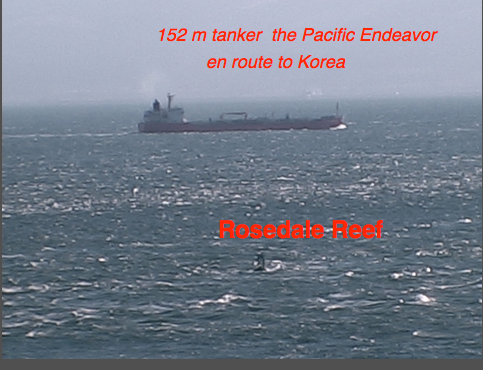
News/Reports
National Energy Board Hearing Application
The Friends of Ecological Reserves Board is submitting an application to Participate as an Intervenor in the National Energy Board Public Hearings for Trans Mountain Pipeline ULC Trans- Mountain Expansion Project.
The project would expand the existing Trans Mountain pipeline system located between Edmonton AB, and Burnaby, BC, resulting in 987 km of new pipeline, and an increase in Tanker traffic through the Salish Sea from the present 5 tankers per month to 34.
* “Under the proposal, up to 34 tankers a month would be loaded with oil at a terminal outside Vancouver, then generally travel through Haro Strait and the Strait of Juan de Fuca for export to markets in Asia and the U.S. That’s up from about five tankers a month now.The $5.4 billion expansion project would nearly triple pipeline capacity from about 300,000 to 890,000 barrels of crude oil a day to meet customer demand. Much of that future cargo will likely be diluted bitumen from Canada’s oil sands.If approved, the expansion is expected to be operational in late 2017. The pipeline is operated by Kinder Morgan Canada and owned by Houston-based Kinder Morgan Energy Partners LP.
About 6,000 large commercial vessels transit Canadian and U.S. waters toward Vancouver or Washington ports each year. Two other proposed projects also are expected to increase cargo vessel traffic in the Salish Sea region. They include the Gateway Pacific coal-export terminal proposed at Cherry Point, which could add up to 487 cargo ships a year, and the proposed expansion at Deltaport at Roberts Bank in Delta, B.C.”
The deadline for applications to submit as an intervenor is by noon of February 12, 2013.
The following is the brief summary of the concerns of the Board which has been included with the application:
- The 2013 government-commissioned risk-analysis report on tanker traffic safety in Canada shows in vivid red of figure 3 the “very high risk zone on Southern Vancouver Island. Within that area lie 17 of the province’s 33 Marine Ecological Reserves. The report indicates that the Kinder Morgan proposal would essentially double the volume of oil passing through an already vulnerable marine environment, the area south of Vancouver Island where Washington-bound oil tankers are common.
- Since there will be up to 34 tanker visits per month in this already crowded marine vessel area by 2017, the Board of the NGO “Friends of Ecological Reserves”, is very concerned for the ecological integrity of the marine reserves within this zone. Our provincial ecological reserves rely on science-based research and are designed to serve as valuable baselines for environmental health on our coast. So far, inadequate government resources have been available to even get the most basic baseline studies in these reserves and in other marine parks on our coast.
- . With the increase in tanker traffic resulting form this proposal, these reserves, already at risk, are particularly vulnerable to irreversible ecosystem damage and extirpation of rare species as the result of the effects of ship accidents, collisions, groundings or accidents at terminals resulting in the release of toxic substances into the Salish Sea.
- Some of the Ecological Reserves include sea floor within the reserve while others end at the high tide line, and most of the marine reserves are islands that are home to colonies of nesting or overwintering sea birds, marine mammals and sub-tidal fish and invertebrates. Mitigation of accidents in these ecosystems is essentially impossible.
- Four marine Ecological Reserves in particular at the southern tip of Vancouver Island would be directly exposed to contamination in the event of a marine accident of any vessel in the Strait of Juan de Fuca. One reserve is used as an example here: The most northerly and only birthing colony of elephant seals in Canada is in the Race Rocks Ecological Reserve. Also it is a winter haulout site for two species of sea lions, and a birthing colony of harbour seals as well as Orca habitat. Three seabird species have nesting colonies on the island and the subtidal marine life in this Rockfish Conservation zone has extremely high biodiversity values. The risk for these rare colonies from increased tanker traffic within a few kilometres is very high. Containment of an oil spill in adverse weather conditions with tidal currents running up to 7 knots make mitigation of a catastrophic event in this reserve impossible. Moreover, the population of marine birds and mammals is highest in the winter months.
- We believe that the value to the citizens of British Columbia and Canada of the Natural Capital and Ecosystem Services provided by these marine reserves, as well as their contiguous marine habitats, far outweigh the dollar value of any profit for Canadian citizens from increased transport of bitumen offshore.
Other Local References:
Tankers in the Strait of Juan de Fuca: http://metchosinmarine.ca/gf/?p=2761
Also see This file showing other ships in the same area the day this photo was taken, and a link to the Government Commissioned Risk-Analysis Report.
*Financial Liability for Kinder Morgan – Georgia Strait Alliance

